Many people in countries such as the United States celebrate Chinese New Year, also known as the Spring Festival or the Lunar New Year. It marks the first day of the New Year in the Chinese calendar.
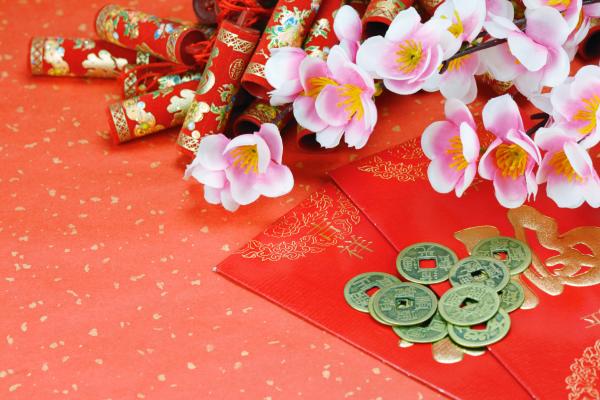 Chinese New Year decorations, including red envelopes for money.
Chinese New Year decorations, including red envelopes for money.
©iStockphoto.com/Liang Zhang
What do people do?
Many individuals and communities, particularly Chinese communities, in the United States take part in the Chinese New Year celebrations, which can last for days. Chinese New Year celebrations in the United States have, over the years, included activities and events such as:
- Chinese New Year parades featuring colorful costumes, floats, firecrackers and other attractions.
- Various dances, including lion and dragon dances.
- Chinatown fun runs or walks.
- Balls and pageants.
- Street fairs.
- Firework displays.
Some organizations may hold special contests or make announcements to coincide with Chinese New Year. For example, some newspapers or magazines may announce the top 10 Chinese restaurants in a city or town on Chinese New Year. It is customary for many Chinese-American families to spend time together and exchange gifts, including money wrapped in red and gold packages that are usually given to children.
Public life
Chinese New Year is not a federal public holiday in the United States. However, some Chinese businesses may be closed on the day or amend their business hours to take part in the Chinese New Year festivities. There may be heavy traffic and some streets may be closed in towns or cities where Chinese New Year celebrations are held.
Background
According to the U.S. Census Bureau (Census 2000: Chinese Largest Asian Group in the United States; March 4, 2002), the Chinese comprised more than 20 percent of the 11.9 million people who identified themselves as Asians in the United States’ Census 2000. That translates into 2.7 million reporting as Chinese – the largest Asian group in the United States.
Chinese historical organizations in the United States can trace the arrival of the Chinese in North, Central and South America as far back as the 1600s. Many Chinese immigrants settled in the United States during the 19th century. With immigration, came Chinese traditions and events such as Chinese New Year, which is now largely celebrated in many communities across the United States.
Symbols
Chinese New Year has various symbols and traditions. For example, flowers are an important part of New Year decorations. Writings that refer to good luck are often seen in homes and business environments. They are usually written by brush on a diamond-shaped piece of red paper. Tangerines and oranges are also displayed in many homes and stores as a sign of luck and wealth.
Envelopes with money (Hong Bao, Ang Pao, or Lai See) often come in the color red, which symbolizes happiness, good luck, success and good fortune. These envelopes are mainly given as presents to children. Each Chinese New Year is associated with an animal name for one of 12 animals in the Chinese zodiac.
About Chinese New Year in other countries
Read more about Chinese New Year.
Courtesy of DateandTime.com
Mardi Gras is a holiday in some parts of the United States and often serves as a festive occasion featuring large celebrations. It is also known as Shrove Tuesday, as it is the last day before the long fast for Lent in many Christian churches.
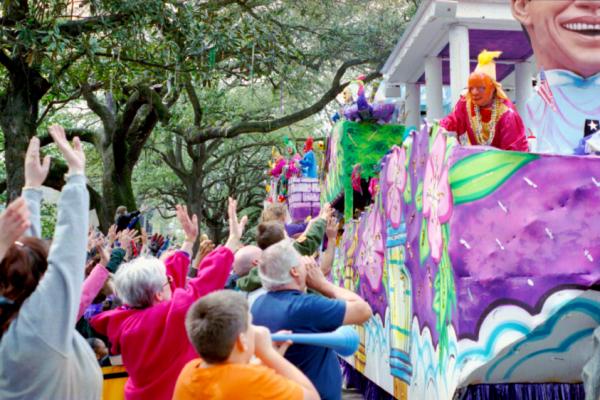 Mardi Gras festivals often feature parades and large crowds in the United States.
Mardi Gras festivals often feature parades and large crowds in the United States.
©iStockphoto.com/sandoclr
What do people do?
Shrove Tuesday is the last day before Lent, a period for fasting. It is also known as Fat Tuesday, or Mardi Gras, and features large festivals and celebrations across the United States. The Mardi Gras parade in New Orleans, in Louisiana, is typical of the masquerades and dancing in the streets that take place in other parts of the United States before the long Lenten fast.
Traditional Mardi Gras parades in New Orleans spotlight the King of the Carnival and the Monarch of Merriment, as well as Comus, the God of Revelry. Many people dress up in eye-catching costumes and a spectacular ball is held. Debutantes are introduced at the Ball Tablaeu as a formal introduction to society.
People throw trinkets to crowds as part of the customary “parade throw” at New Orleans’ Mardi Gras celebration. During the Bacchus parade, the king’s float throws doubloons with the image of the “Celebrity King” on one side of the doubloon (cups and toy coins) to parade watchers. Traditional Mardi Gras food includes the King Cake in which a pecan or charm is hidden. The person who gets a piece of the cake with the charm or nut is dubbed the “king” of that year’s Mardi Gras.
The Mobile and Baldwin counties in Alabama also celebrate Mardi Gras. Parade schedules start as early as January and feature marching bands, colorful floats, and crowds of parade goers along the streets in downtown Mobile. Galveston, in Texas, hosts its own Mardi Gras celebration, which features masked balls, a royal coronation, Cajun dances, jazz performances and parades with floats.
Public life
Mardi Gras is a state holiday in Louisiana. It is also marked as a holiday in the Baldwin and Mobile counties only in Alabama. Governing authorities of any municipality or county in Mississippi can declare this event as a holiday to replace any legal holiday except Martin Luther King’s Birthday (which is combined with Robert E Lee’s Birthday in the state).
Background and Symbols
Mardi Gras in the United States was first observed in Mobile when it was a colony of French soldiers in 1703. Mardi Gras was transformed into a parade event in 1840 by the Cowbellion de Rakin Society, the first of Mobile’s organizations that journeyed to New Orleans in 1857 to help a group there set up a Mardi Gras celebration. The first Carnival society, known as the Mistick Kreweof Comus, took part in coordinating the event that year.
The event was well received and continued until it was suspended during the American Civil War. Mardi Gras was one of the first local institutions to be revived after the war. It reappeared in 1866 and has continued to grow in modern times. A general article about Shrove Tuesday worldwide covers more information about its background and symbols.
About Shrove Tuesday/Mardi Gras in other countries
Read more about Shrove Tuesday/Mardi Gras.
Courtesy of DateandTime.com
Many Christian Americans mark Ash Wednesday as the first day of Lent. It follows Shrove Tuesday, which features Mardi Gras celebrations.
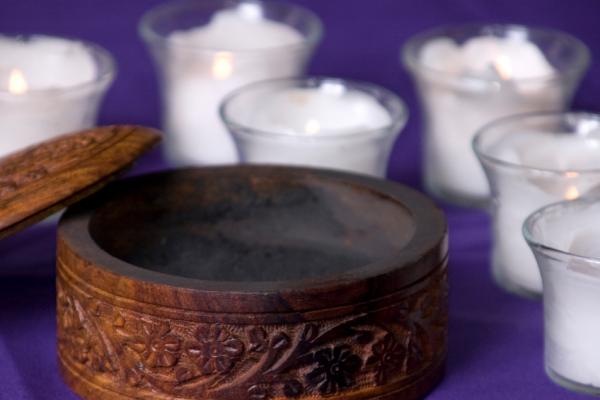 Ash is an important symbol of Ash Wednesday in many Christian churches.
Ash is an important symbol of Ash Wednesday in many Christian churches.
©iStockphoto.com/Ben Beltman
What do people do?
Some Christians in the United States attend special Ash Wednesday church services. This includes students who attend Catholic and other church schools. Priests usually place blessed ashes in form of the cross on individuals’ foreheads to remind them of mortality, sorrow for sins, change, and forgiveness.
Ash Wednesday marks the beginning of Lenten discipline for observant Christians. It is traditionally a time of fasting and prayer in preparation for receiving or reaffirming baptism at Easter. For some Christians, Lent is a time to think about one’s life choices and mortality, as well as reflect on life directions. It serves as a wakeup call for some Christians. There are also those who choose this time of the year to donate to charities or take part in charity events as a way to get close to God.
Public life
Ash Wednesday is an observance and not a federal public holiday in the United States.
Background and Symbols
The practice of marking foreheads with ashes is common among Roman Catholics, Anglicans, Lutherans and Episcopalians in the United States. However some Methodist and Presbyterian churches adopted this custom in recent times, especially around the 1990s. A general article about Ash Wednesday worldwide covers more information about its background and symbols.
About Ash Wednesday in other countries
Read more about Ash Wednesday.
Courtesy of DateandTime.com
Many Christians in the United States remember Jesus’ triumphal entry into Jerusalem on Palm Sunday, which marks the beginning of Holy Week. This day is also on the Sunday before Easter Sunday.
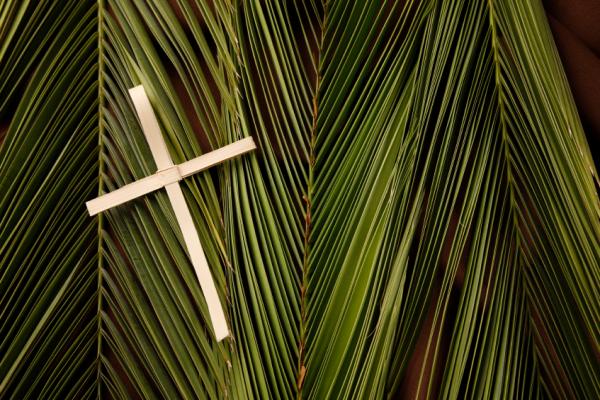 The palm and the cross are Christian symbols that are seen in churches at a Palm Sunday service or mass.
The palm and the cross are Christian symbols that are seen in churches at a Palm Sunday service or mass.
©iStockphoto.com/duckycards
What do people do?
Programs of sacred music are performed in many towns and cities in the United States on Palm Sunday. They are often sponsored by and held in local churches but they may also be part of the musical community’s regular concert series. These programs usually begin on or before Palm Sunday and may continue throughout Holy Week. Bethany College’s Messiah Festival in Lindsborg, Kansas, has been held during Holy Week for more than 100 years.
Plays or pageants that focus on Holy Week themes are also performed on Palm Sunday. The Blessing of the Fleet in St Augustine, Florida, takes place on Palm Sunday each year. Shrimp trawlers and other fishing boats, as well as privately owned vessels, visit the town to receive a blessing. It is also customary for Christians to place blessed palm leaves in the shape of a cross behind religious images or statues in homes, stores and restaurants in the United States.
Public life
Palm Sunday is not a federal holiday in the United States. However, it is held on a Sunday, which is a non-school day and non-working day for many Americans.
Background and Symbols
Palm Sunday is observed among many Christian churches as part of Holy Week in the United States. The term Pascua Florida, which in Spain originally referred to Palm Sunday, was later applied to the festive season of Easter Week. The state of Florida received its name when Ponce de Leon first sighted the land and named it in 1513 most likely because the date was around Easter.
Palm leaves symbolize victory and joy among many Christians in the United States. Some churches use silk plant leaves or substitute palm leaves with olive branches on Palm Sunday because palm leaves can be difficult to find in some areas in the United States.
About Palm Sunday in other countries
Read more about Palm Sunday.
Courtesy of DateandTime.com
Good Friday occurs two days before Easter Sunday in the United States. It is the day when Christians commemorate Jesus Christ’s crucifixion, which plays an important part in the Christian faith. It is not a federal holiday in the United States, although it is a state holiday in some states.
 Good Friday remembers the death of Jesus Christ.
Good Friday remembers the death of Jesus Christ.
©iStockphoto.com/kelly cline
What do people do?
Some Christians may attend special church services or prayer vigils. Good Friday is a day of mourning and quiet prayer for many Christians. The candles are often extinguished and statues, paintings and crosses may be draped in black, purple or gray cloth. Some Catholics treat Good Friday as a day of fasting, while others observe a partial fast involving the exclusion of meat.
Some homes keep a quiet atmosphere, with little or no outside activities and limited television, radio, and computer use, in observing Good Friday. Others choose to play music such as JS Bach’s St. Matthew’s Passion. Some people bake hot cross buns, a traditional Good Friday sweet.
Good Friday is another day at work for many Americans, as it is not a national holiday. Some people may choose to take a day off work and have a long “Spring Break” weekend. In some states, employees are given a day off on Good Friday.
Public life
Good Friday is not an official holiday in the United States. Regular services will continue according the schedule in some areas, including Toledo, Ohio, where the city’s refuse will be collected during its regular schedule. However, financial markets, as well as many businesses, public schools and universities/colleges are closed on Good Friday.
Good Friday is a state holiday in some states such as Hawaii, where city and state offices are closed and some forms of public transport (eg. buses) run on the state holiday schedule. In some areas, such as Perry County in Tennessee, Good Friday is a school holiday. Good Friday is a holiday designated by the governor as a day of fasting and prayer in Connecticut.
In accordance with state law, Indiana state employees are given a day off on Good Friday, a religious holiday. In 1999, in the case of Bridenbaugh v O’Bannon, an Indiana state employee sued the governor for giving state employees Good Friday as a day off. The US Seventh Circuit Court of Appeals ruled against the plaintiff, stating that the government could give state employees a paid day off when that day is a religious holiday, including Good Friday, but only so long as the state can provide a valid secular purpose that coincides with the obvious religious purpose of the holiday.
Background
Good Friday is the day when Christians commemorate the crucifixion and death of Jesus Christ. The Easter date depends on the ecclesiastical approximation of the March equinox.
This is an important event in Christianity, as it represents the sacrifices and suffering in Jesus’ life. The crucifixion was the culmination of a number of events in Holy Week, including: the triumphal return of Jesus to Jerusalem on Palm Sunday; the washing of the disciples’ feet by Jesus; and the Last Supper on Maundy Thursday. Some churches organize a prayer vigil on Good Friday for various causes, such as for cancer patients or for the American troops who have been sent to the middle-east.
Symbols
The crucifix, or cross, which represents the way Jesus died, is an important symbol seen on Good Friday. Some crosses bear a figure of Christ. Other symbols of Good Friday include black cloth used to cover the cross, paintings and statues in churches and some homes to signify mourning.
About Good Friday in other countries
Read more about Good Friday.
Courtesy of DateandTime.com
Many Christians celebrate Jesus Christ’s resurrection on Easter Sunday. The Easter date depends on the ecclesiastical approximation of the March equinox.
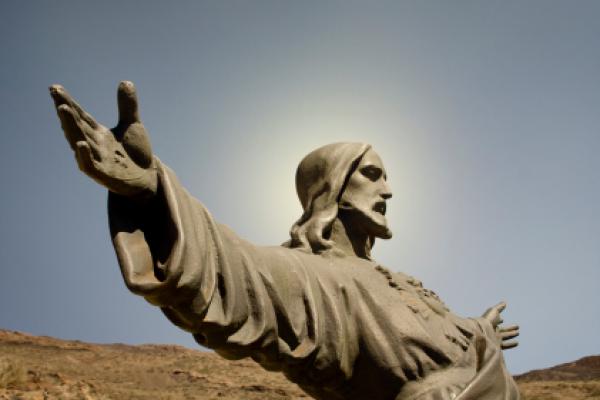 Easter Sunday celebrates the Christian belief of Jesus Christ’s resurrection from the dead.
Easter Sunday celebrates the Christian belief of Jesus Christ’s resurrection from the dead.
©iStockphoto.com/ Marcus Lindström
What do people do?
Many churches hold special services on Easter Sunday, which celebrate the Jesus Christ’s resurrection after his crucifixion. Many people also decorate eggs. These can be hard boiled eggs that can be eaten later, but may also be model eggs made of plastic, chocolate, candy or other materials. It is also common to organize Easter egg hunts. Eggs of some form are hidden, supposedly by a rabbit or hare. People, especially children, then search for them. In some areas, Easter egg hunts are a popular way for local businesses to promote themselves or may even be organized by churches.
Public life
Easter Sunday is not a federal holiday but a number of stores are closed in many parts of the US and if they are open, they may have limited trading hours. In some cities, public transit systems usually run their regular Sunday schedule, but it is best to check with the local transport authorities if any changes will be implemented during Easter Sunday.
Background
In Pagan times, many groups of people organized spring festivals. Many of these celebrated the re-birth of nature, the return the land to fertility and the birth of many young animals. These are the origins of the Easter eggs that we still hunt for and eat.
In Christian times, the spring began to be associated with Jesus Christ’s crucifixion and resurrection. The crucifixion is remembered on Good Friday and the resurrection is remembered on Easter Sunday. The idea of the resurrection joined with the ideas of re-birth in Pagan beliefs.
Symbols
For people with strong Christian beliefs, the cross that Jesus was crucified on and his resurrection are important symbols of the period around Easter. Other symbols of Easter include real eggs or eggs manufactured from a range of materials, nests, lambs and rabbits or hares. Sometimes these symbols are combined, for example, in candy models of rabbits with nests full of eggs. Eggs, rabbits, hares and young animals are thought to represent the re-birth and return to fertility of nature in the spring.
About Easter Sunday in other countries
Read more about Easter Sunday.
Courtesy of DateandTime.com
The Advent season marks the beginning of the Christian year across many western churches in the United States. Its length varies from 22 to 28 days, starting on the Sunday nearest St Andrew’s Day and encompassing the next three Sundays, ending on Christmas Day.
 Advent wreaths can be seem in some churches in the United States during the Advent season.©iStockphoto.com/Dušan Zidar
Advent wreaths can be seem in some churches in the United States during the Advent season.©iStockphoto.com/Dušan Zidar
What do people do?
Many Christians in the United States attend a church service on the first Sunday of Advent and may engage in activities such as special prayers and contributing to ideas on enhancing peace. Many Advent traditions are observed in the United States in the prelude to Christmas Day. For example, the Advent wreath is becoming increasingly popular in the United States. The wreath can be seen in various churches across the nation around this time of the year.
Advent calendars of all designs are also given as gifts at this time of the year. The calendars feature openings in the form of windows or doors that are numbered to count the days to Christmas. Calendars may contain chocolates, toys, or candy and are given to children as a fun way to observe the Christmas countdown. Some traditional Advent calendars show 24 days but many Advent calendars showing 25 days, with the last opening on Christmas Day.
The church year begins in September 1 in many eastern Christian churches, so Advent begins at a different time to when it starts in the western churches. The eastern equivalent of Advent is called the Nativity Fast, which runs for 40 days.
Public life
The first Sunday of Advent is not a nationwide public holiday in the United States. However, churches may be busy on this day, as well as families who use the beginning of Advent as a time to prepare for the Christmas season.
Background
It is uncertain as to when exactly the celebration of Advent was first introduced in the Christian church. Some sources say that Advent began on November 11 (St Martin’s Day) at some time in the fifth century in the form of a six-week fast leading to Christmas. Advent was reduced to its current length at some stage in the sixth century and the fasting was later no longer observed. Advent is originally a time to reflect and prepare for Christmas similarly to how Lent is in preparation for Easter. Advent has sometimes been referred to as the Winter Lent. In recent times the restrictions that Advent brings to Christians have become more relaxed.
Advent traditions spread from Europe to the United States, especially the Advent calendar, which became very popular in the United States after World War II as American military personnel and their families who were stationed in Germany brought them home and made them a part of the pre-Christmas traditions. Some people credit President Dwight Eisenhower with helping the tradition of the Advent calendar spread in the United States during the 1950s.
Symbols
Purple is historically the main color used for Advent because it reflects penitence, fasting, and the color of royalty to welcome the Advent of the king (Jesus Christ). The focus of the entire season is the celebration of the birth of Jesus the Christ in his first Advent, and the anticipation of the return of Christ the King in his second Advent. Some churches use other colors in recent times. For example, some churches mark the third Sunday of Advent with pink or rose, colors that represent joy. Many Protestant churches use blue to distinguish the Season of Advent from Lent.
Advent wreaths are symbolic of Advent. They are usually made of fir and decorated with gold and silver ribbons or scarlet woolen threads. Lit wreaths may be displayed on the table where family and friends sit while singing carols and preparing handmade gifts.
About First Sunday of Advent in other countries
Read more about First Sunday of Advent.
Courtesy of DateandTime.com
Many Jewish people in the United States mark the last day of Hanukkah as the end of the Hanukkah celebrations. Hanukkah, also known as the Festival of Lights, is an eight-day Jewish observance to commemorate the Jewish people’s struggle for religious freedom.
 It is a Jewish tradition for candles to be lit during Hanukkah.
It is a Jewish tradition for candles to be lit during Hanukkah.
©iStockphoto.com/Pavlina Richterova
What do people do?
Hanukkah is one of the happiest Jewish events for many Jewish Americans. Many families light candles on the hanukiah, a type of candle holder, eat sizzling potato pancakes, give gifts and play with the dreidel, a spinning toy that is particularly popular during Hanukkah.
The last day of Hanukkah is the eighth day of Hanukkah. It is known as Zose Hanukkah, Zos Hanukkah or Zot Hanukkah. It is the second day of the month of Tevet and marks the day on which the great miracle of oil occurred, according to Jewish belief. It is a particularly special day because it encapsulates all of Hanukkah.
Hanukkah events in the United States include daytime or evening events featuring make popular food eaten during Hanukkah, particularly food fried in oil. There are also music nights reserved for singing and playing the dreidel, games events, as well as concerts and plays.
Public life
The last day of Hanukkah is not a nationwide federal holiday in the United States. Many Jewish schools have their school vacation fall around the same time of Hanukkah.
Background
Hanukkah commemorates the Jewish people’s successful rebellion against the Syrians in the Maccabean War in 162 BCE. A ritual cleansing and re-dedication of the Temple occurred after the Jewish people’s victory. It is believed that there was only enough consecrated oil to keep the lamp burning for one day but the small bottle of oil miraculously lasted for eight days. Hanukkah, also known as Chanukah, is referred as the Feast of Lights or Festival of Lights for this reason.
Moreover, the survival of Judaism over the many years is also celebrated during this period. Hanukkah is celebrated for eight days between the 25th day of the month of Kislev to the second day of Tevet in the Hebrew calendar. The first day of Hanukkah marks the start of eight-day Hanukkah period. It is marked as the 25th day of the month of Kislev in the Jewish calendar. The Hanukkah period ends on the second day of the month of Tevet. It is important to note that many Jewish observances begin at sunset on the day before.
Symbols
The dreidel is a toy that is popular during the Hanukkah celebrations. It is a spinning top with a different Hebrew letter inscribed in each of its four sides – the four letters form an acronym meaning “a great miracle happened here”. The hanukiah (or chanukkiyah) is a type of candelabrum that holds eight candles to commemorate the eight days that the oil burned and a ninth candle that sits apart, known as the shamash, or servant candle that lights the others. One candle is lit on the first night, another on the second, and so forth until all candles are lit on the last night.
About Last Day of Chanukah in other countries
Read more about Last Day of Chanukah.
Courtesy of DateandTime.com
